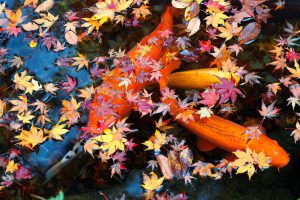
Large Pond Filters Systems: Essential Solutions for Effective Water Management
When maintaining a large pond, choosing the right filtration system is crucial for the health of aquatic life and the clarity of the water. A quality large pond filter system not only removes debris, fish waste, and impurities but also promotes beneficial bacteria to thrive in the ecosystem. Understanding the different types of filters available can significantly impact the effectiveness of our pond maintenance efforts.
We often overlook the importance of size, flow rate, and type of filtration when selecting a system. Each pond presents unique challenges, and what works for one may not be suitable for another. By exploring our options and identifying the right match for our specific needs, we can ensure a vibrant and balanced aquatic environment.
As we dive into the details of large pond filter systems, we’ll cover essential factors like capacity, maintenance requirements, and the benefits of each filter type. This knowledge enables us to make informed choices that enhance not only the beauty of our pond but also the wellbeing of its inhabitants.
Understanding Pond Filtration Systems
Pond filtration systems are essential for maintaining water quality in our ponds. These systems remove debris, toxins, and excess nutrients, creating a healthy environment for fish and plants. Selecting the right type of pond pumps is crucial for ensuring efficient water circulation and effective filtration.
There are several types of filters we can use:
Mechanical Filters: These remove larger particles like leaves and dirt.
Biological Filters: They use beneficial bacteria to break down harmful substances.
Chemical Filters: These can eliminate specific contaminants through media like activated carbon.
When selecting a filter, we should consider the pond’s size and the fish load. A larger pond may require a more robust filtration system to ensure water clarity and quality.
Key Factors to Consider:
Flow Rate: It should match or exceed the pond volume for effective filtration.
Maintenance: Some filters require more frequent cleaning than others, impacting our workload.
Energy Efficiency: Choosing energy-efficient models can reduce running costs.
In our pursuit of a healthy pond, understanding these systems enables us to make informed decisions. By combining different types of filtration, we can optimise our water quality effectively.
Choosing the Right Pond Filter
Choosing the right pond filter is crucial for maintaining a healthy environment for your fish. With so many options available, it can be overwhelming to decide which one is best for your pond. Here are some factors to consider when selecting a pond filter:
Pond Size: The size of your pond will determine the type and size of the filter you need. Larger ponds require more powerful filters to handle the increased water volume effectively.
Fish Population: The number and type of fish in your pond will also impact the type of filter you need. Koi ponds, for example, require specialized filters that can manage the high waste production of these fish.
Water Quality: The quality of your pond water will also play a role in determining the type of filter you need. If your pond has poor water quality, you may need a filter that can handle high levels of waste and debris.
Budget: Finally, consider your budget when selecting a pond filter. Filters can range in price from a few hundred to several thousand dollars, so it’s essential to choose one that fits within your budget.
By considering these factors, you can select a pond filter that ensures a healthy environment for your fish and maintains the clarity of your pond water.
Types of Large Pond Filters
When managing a large pond, selecting the right filtration system is crucial. Ensuring the filter outlet is positioned above the pond’s water level is essential for optimal performance. Various types of filters fulfil specific roles to sustain water quality and support aquatic life. Below, we explore each category in detail.
Mechanical Filters
Mechanical filters are designed to remove physical debris from pond water. These filters typically utilise a combination of screens, brush pads, or foam to capture leaves, algae, and other particulates. Mechanical filters are also ideal for smaller ponds, where they can efficiently manage limited volumes of water and light fish loads.
Common types include:
Strainers: Prevent large debris from entering the pump system.
Settlement Tanks: Allow solids to settle at the bottom, making it easier to remove them.
Regular maintenance is essential to ensure these filters function effectively. Clogged filters can decrease flow rates, leading to poor water quality.
Biological Filters
Biological filters play a vital role in breaking down harmful substances in pond water. They provide a surface for beneficial bacteria to thrive, promoting the conversion of ammonia and nitrites into less harmful nitrates.
Key components include:
Filter Media: Various materials such as gravel, foam, or plastic provide a surface for bacterial colonisation.
Flow Rate: Optimising the flow rate ensures adequate contact time for bacterial action.
These filters significantly improve water clarity and reduce fish stress by managing toxic waste products.
Chemical Filters
Chemical filters are used to remove specific contaminants from pond water through chemical processes. They often contain substances such as activated carbon or zeolite, which can absorb unwanted chemicals.
Important aspects include:
Activated Carbon: This common filter media removes odours, discolouration, and harmful substances.
Zeolite: Effective for ammonia absorption, helping to keep levels low and safe for fish.
Regular replacement of chemical filter media is required to maintain effectiveness and ensure proper water quality.
UV Clarifiers and Sterilisers
UV clarifiers and sterilisers use ultraviolet light to eliminate microorganisms in pond water. These devices help control algae blooms and pathogenic bacteria that can harm fish and plants.
We should consider:
UV Bulb: The strength and type of UV bulb impact the effectiveness. Proper sizing for the pond volume is crucial.
Flow Rate: Adjusting flow rates to match the manufacturer’s recommendations ensures optimal performance.
Using UV systems can reduce the need for chemical treatments and promote a healthier pond ecosystem.
Koi Pond Filters: A Specialized Solution
Koi pond filters are designed specifically for koi ponds and are equipped to handle the unique challenges of these ponds. Koi fish produce a high amount of waste, which can quickly lead to poor water quality if not properly filtered. Koi pond filters use a combination of mechanical and biological filtration to remove waste and debris from the water, creating a healthy environment for your fish.
Mechanical Filtration: Koi pond filters use mechanical filtration to remove solid waste and debris from the water. This is typically done using a submersible pump and a filter media such as foam or ceramic rings.
Biological Filtration: Koi pond filters also use biological filtration to remove waste products and ammonia gas from the water. This is done using beneficial bacteria that convert these waste products into harmless materials.
By utilizing both mechanical and biological filtration, koi pond filters ensure that your pond remains clean and your koi fish thrive in a healthy environment.
Pond Filter Systems: Key Components and Installation
A pond filter system typically consists of several key components, each playing a vital role in maintaining water quality:
Pump: The pump is responsible for circulating water through the filter system. It’s essential to choose a pump that is powerful enough to handle the volume of your pond.
Filter Media: The filter media is responsible for removing waste and debris from the water. Common types of filter media include foam, ceramic rings, and bio-balls.
Biological Filter: The biological filter is responsible for removing waste products and ammonia gas from the water. This is typically done using beneficial bacteria.
UV Clarifier: The UV clarifier is responsible for removing algae and other microorganisms from the water.
When installing a pond filter system, it’s essential to follow the manufacturer’s instructions carefully. Here are some general tips to keep in mind:
Make sure the pump is properly sized for your pond.
Ensure the filter media is properly installed and maintained.
Regularly clean and maintain the biological filter.
Install the UV clarifier according to the manufacturer’s instructions.
By understanding and properly installing these components, you can ensure your pond filter system operates efficiently, maintaining a healthy environment for your fish.
Large Pond Filter Systems: Scalability and Customization
Large pond filter systems require specialized equipment and expertise to ensure proper filtration and water quality. Here are some factors to consider when selecting a large pond filter system:
Scalability: Large pond filter systems need to be scalable to handle the increased water volume. Look for systems that can be easily expanded or upgraded as needed.
Customization: Large pond filter systems often require customization to meet the specific needs of the pond. Look for manufacturers that offer customized solutions and expert advice.
Power and Efficiency: Large pond filter systems require powerful pumps and efficient filtration systems to handle the increased water volume. Look for systems that are designed for high-performance and efficiency.
By focusing on scalability, customization, and efficiency, you can select a large pond filter system that meets the unique needs of your pond, ensuring optimal water quality and a healthy environment for your aquatic life.
Related Posts
- Who’s Hunting My Pond Fish in the UK: Identifying Predators and Protecting Your Aquatic Life
- The Ultimate Guide to Pond Biological Filtration
- Pond Cleaning & Maintenance Service Stevenage
- Aqua Pond Ltd: Experts in Professional Pond Cleaning Services
- Garden Pond Cleaning & Maintenance Service: Essential Care for a Thriving Aquatic Environment
- How to Find a Leak in a Pond Liner: A Step-by-Step Guide
- Pond Plants: A Beginner’s Guide to Planting Your Garden Pond Effectively
- How to Repair a Cracked or Leaking Concrete Pond or Fish Pond: Quick and Effective Solutions

